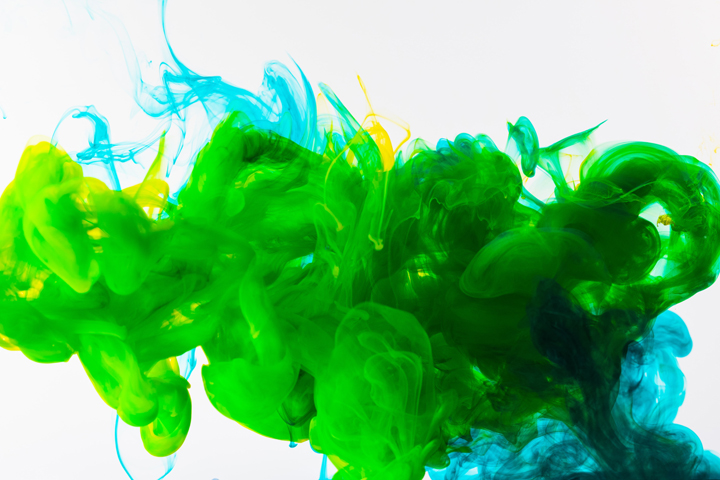Green is a bright, vibrant color found all over nature. The color of trees, grass, and plants creates a fresh and fun atmosphere. This guide is for you if you want to learn how to make green in your art. I’ll walk you through how to mix green paint and the colors you’ll need for it.
Having said that, there are many different shades of green out there. So, you’ll need a different mix of paints depending on the exact shade of green you want to make.
In this guide, I’ll show you how to make light green, how to make dark green, and everything in between. So, let’s dive in and learn what makes green.
Green: A Color or a Hue?
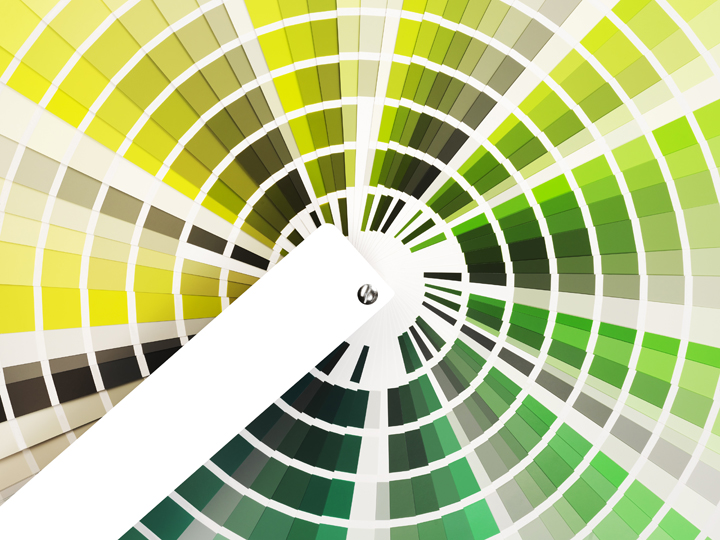
Green is considered a hue rather than a color, tint, or shade. If you dive into color theory, it can initially seem a little complex. But there are specific definitions for colors, hues, tones, tints, and shades. You can learn more about the differences between these color terms here.
Color is a very generic tone, but a hue refers to the dominant color within a shade. So, for example, gray, white, and black are not hues, but they could be classed as colors.
When you add white to a color, it’s referred to as a tint. But if you add black, it becomes a shade. And finally, if you add gray, you’ll have a tone.
It’s helpful to understand these distinctions when mixing your own colors. But now, let’s take a closer look at how to make green.
What Two Colors Make Green?
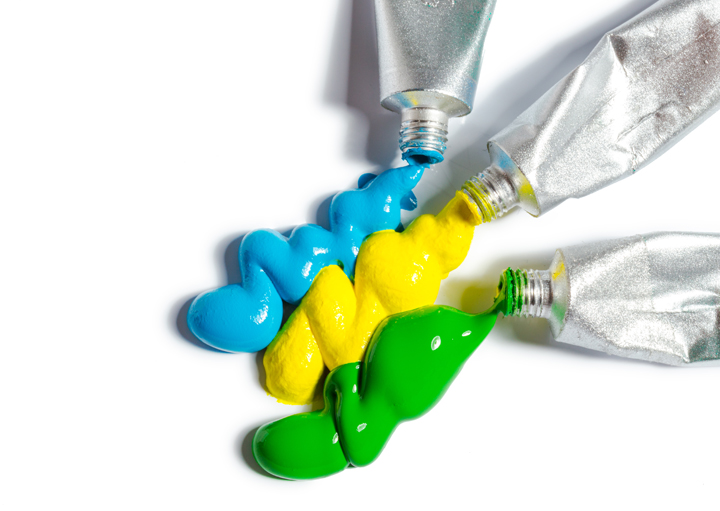
Have you been wondering what colors mixed together make green? Then, you’ll be pleased to hear that it’s quite a simple formula, as green is a secondary color.
You can make a secondary color by mixing two primary colors. In this case, you’ll need to combine yellow and blue to make green.
If you mix equal amounts of yellow and blue, you’ll get a true green color. However, if you change the yellow and blue ratio, you’ll have different shades.
How To Make Green Paint
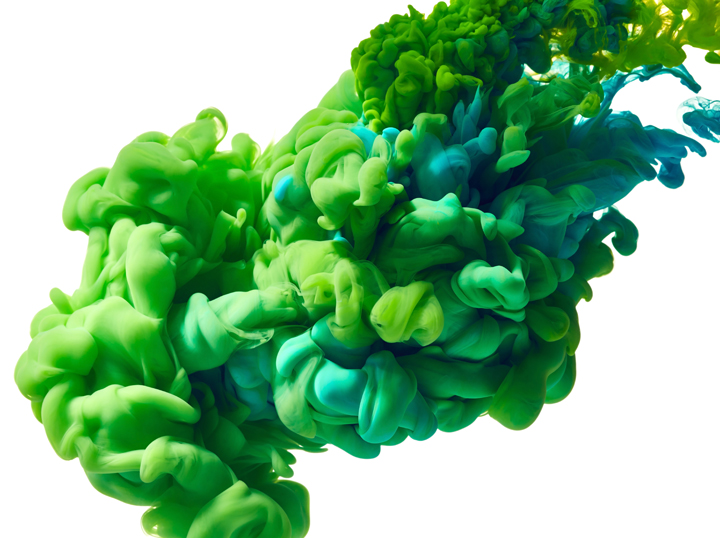
Here’s everything you need to know if you’re wondering how to make green.
But as you can see, there are many different shades of green. And as a result, there are several options for mixing green paint.
Each one will produce a slightly different shade of green, ranging from light to dark green. Som, you can browse through and take your pick.
If you’re new to mixing paint, go ahead and experiment with these methods. First, you’ll gain a deeper understanding of color theory by mixing your own paints. Plus, you’ll also become more confident as an artist. And as a result, you’ll find it easier to create any shade of green when you need it for your painting.
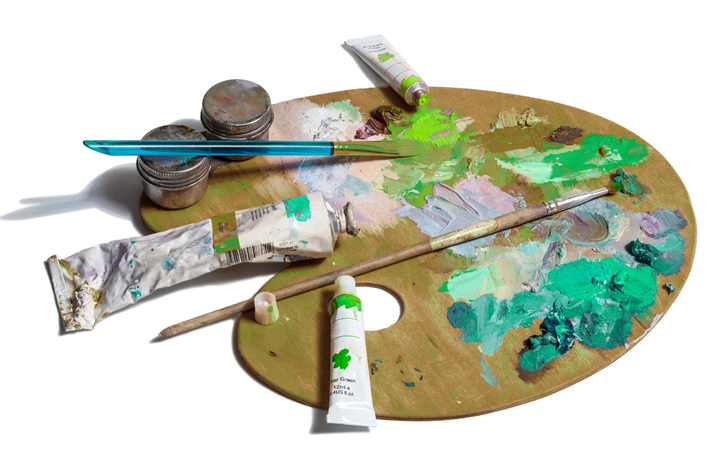
And if you’re mixing colors digitally. Even better, you can use the ‘undo’ button if you don’t like the result. So, it’s a great way to test how different colors look together. Check out my guide on how to do digital art for more tips!
Mix #1: Yellow + Blue = Pure Green
The first method to try to make green is also the simplest. All you need to do is mix the same amount of blue and yellow together. As a result, you should get a color aptly called true green.

It sits equally between yellow and blue on the color wheel. This shade of green doesn’t have yellow or blue undertones and is a nice, bright shade of green.
But it’s slightly brighter than you’ll tend to find in nature. So, you might not be satisfied with this exact shade for your painting. If that’s the case, check out the other methods below to create a range of green shades.
Mix #2: Blue + More Yellow = Yellow-Green
As we mentioned above, you can create different shades of green by changing the ratio of yellow to blue. So, if you’d like a brighter, yellow-green color, you just need to add more yellow.

You can start by mixing a true green with equal amounts of blue and yellow. Then, gradually add a little more yellow to your shade of green.
You should see the color becoming brighter, lighter, and warmer. But the exact result will depend on which yellow shade you use in the mix. Cadmium yellow is a good color because it’s bright and vibrant.
If you want a cooler color, you can choose a yellow on the cool end of the spectrum instead. For example, goldenrod yellow (hex code #DAA520) is a rich, earthy, warm yellow. So, it will create a different green than the much cooler citrine yellow (hex code #E4D00A).
Mix #3: Yellow + More Blue = Blue-Green
On the other hand, you might want a green with a blue undertone. Then, you’ll just need to add more blue to your initial mix of yellow and blue. You can keep adding a little at a time until you get your desired shade.

But of course, it will also depend on what shade of blue you use. As with green, there are as many shades of blue as you can imagine.
For example, ultramarine blue is a bright, warm blue. So, it will create a warmer, earthy type of green. And if you go for the darker RGH blue, you’ll also get a rich, dark shade of green.
You can experiment with different types of blue to see the results. But it will also depend on what you have to hand.
Sometimes, you might want to make your green lighter or darker. So, the next two mixes will be handy for lightning or darkening your green paint.
Mix #4: Blue + Yellow + White = Pastel Green
If you want to create a lighter green color, you can add small amounts of white paint to your mix. This will create a green tint, often called pastel green. You can add a little or mix in more if you want a much lighter color.

But don’t worry if you make a mistake when mixing colors. The good news is that it’s easy to reverse the process if you’re too heavy-handed.
If you add too much, you can mix a little more blue and yellow together to create green. Then, you can even it out by mixing in the resulting green.
And remember that it’s a learning process. You’ll become more confident the more you do it. Soon, you’ll be able to mix colors just by gauging how much of each shade you need.
Mix # 5: Blue + Yellow + Black = Dark Green
Now, if you want to create a darker green, you must add some black to the mix. But make sure only to add a tiny amount at a time.

Black is such a dark color and can quickly become overpowering. It’s easier to save your paint if you make it too light – you can just add some more green.
But if you add too much black paint, it can be tricky to return to the original green color. So, be very sparing when adding black to your green paint.
Mix #6: Blue + Yellow + Dioxazine Purple = Dark Green
You’ll often need to use dark green in your paintings. So, having more than one way to make it is helpful. Then, you won’t be caught out if you don’t have any black paint handy.

Here’s another method you can use to make a dark shade of green. Instead of adding black to your green mixture, you can use dioxazine purple instead. It works just as well but is a bit more nuanced. You’ll end up with a deep, earthy green that works well for nature paintings.
Mix #7: Blue + Yellow + Cadmium Red = Muted Green
Sometimes, you need a more muted green. That’s especially useful if you paint nature scenes and need various greens.

Often, greens found in nature aren’t as bright and vibrant, especially during the winter. So, this formula can come in useful for those types of paintings.
First of all, mix your yellow and blue colors together. Then, you can add cadmium red to your true blue. The more you add, the more muted your green color will become.
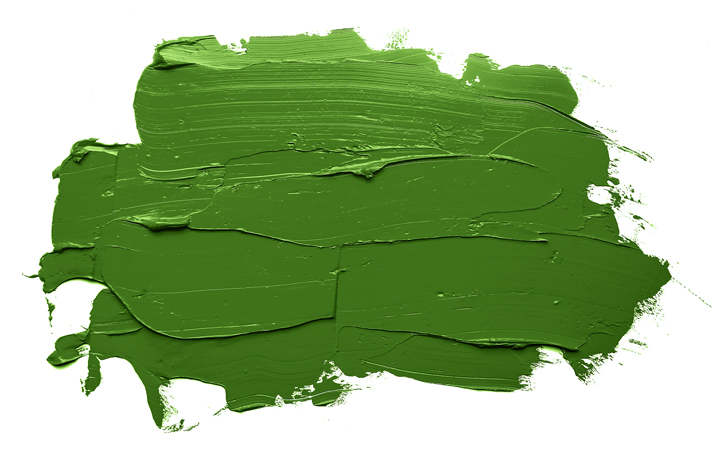
However, you need to take care when mixing green and red together. Green is made up of the primary colors blue and yellow. But when you mix all three primary colors together, you can end up with brown.
Be careful not to add too much red to the mix, or you’ll get a muddy brown instead of a muted green!
What Colors Make Green Paint FAQ
Is it possible to Make Green Without Yellow?
Technically, it isn’t possible to make green without yellow. Green is made by mixing two primary colors, blue and yellow. So you can have a green with more blue-to-yellow in the ratio. But it wouldn’t be the color green without at least a little yellow mixed in.
But practically, there is a shortcut you can take if you don’t have any yellow paint. You can use orange instead of yellow. The reason is that orange contains a large proportion of yellow already.
A quick side note: make sure you pick an orange with yellow undertones. If you use orange with red undertones, your green could appear murky and brown instead.
What is the Complementary Color of Green?
You can find the complementary color of any shade by looking at a color wheel. The color opposite will complement the shade and look nice together.
Green is opposite pink and red on the color wheel, so they’re complementary shades to green. You can create a striking color scheme using these shades. That’s because they contrast with and complement each other. But as they are strong colors, you will also want to add some more neutral colors.
How to Make Light Green?
You can make light green by mixing blue and yellow together. Then, you can add small amounts of white to the green until you get the desired result.
If you don’t have white paint, you could use a pale yellow color instead. Using yellow will also make the green color look brighter and warmer.
How to Make Dark Green Paint?
It’s easy to make your green paint darker by adding a little black paint. But if you don’t have any black paint to hand, there are alternatives you can use. For example, you could add dioxazine purple or pthalo blue to create a darker green shade.
How to Make Forest Green Paint?
Forest green is a deep, rich green color. You can create this shade by mixing blue and yellow as per normal. Then, add a little black until the green is dark enough to meet your needs.
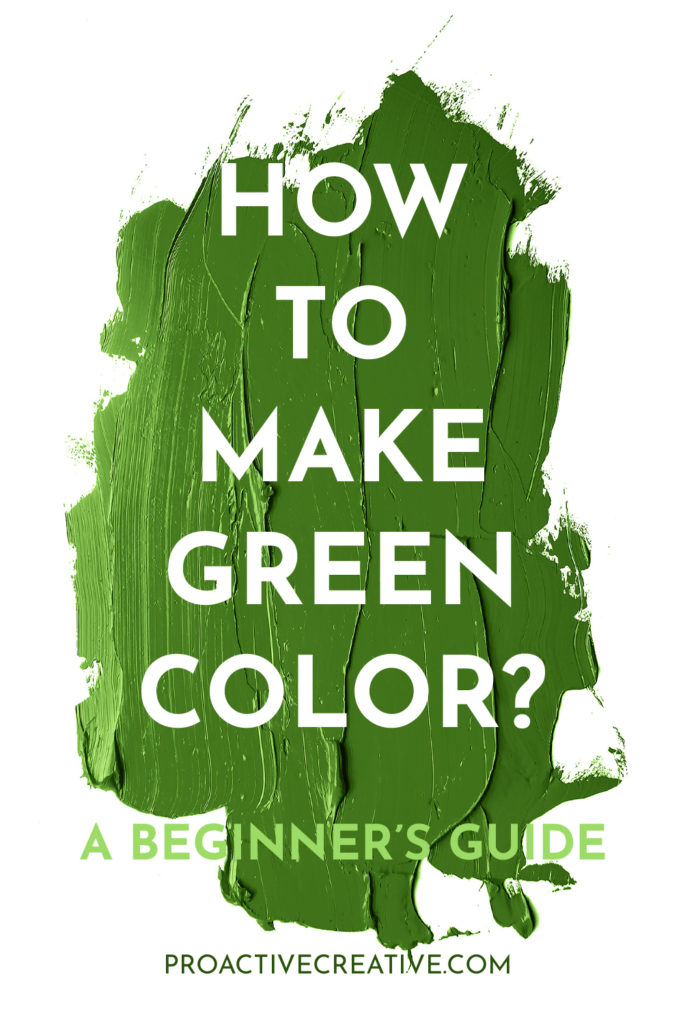
The Wrap Up
Now, you know all there is to know about how to make green. You can use these tips for mixing green paint or creating green in a program like Photoshop for digital art.
So, all that’s left for you to do is to have a go for yourself! Try out these different methods, test various shades, and see which ones you like best. By getting messy and hands-on, you’ll become an expert at mixing your own paint colors.
Let me know if you have any questions about what makes green in the colors below. In the meantime, follow Proactive Creative on Pinterest for more tips, tutorials, and reviews!

